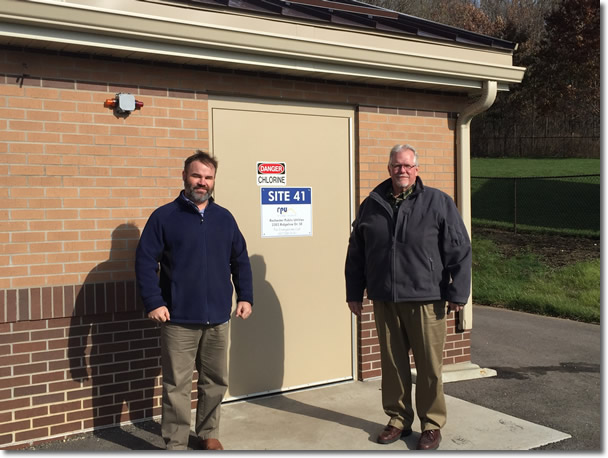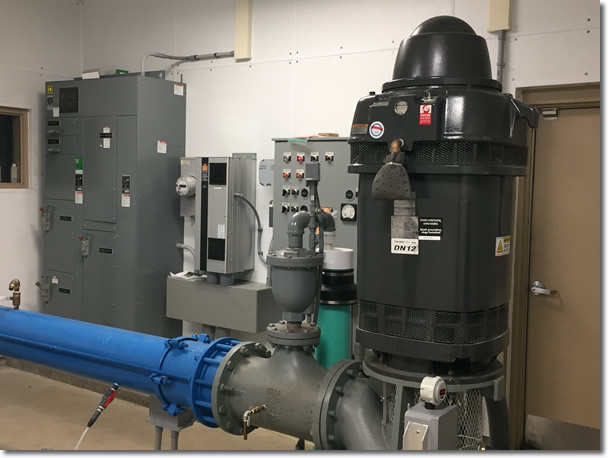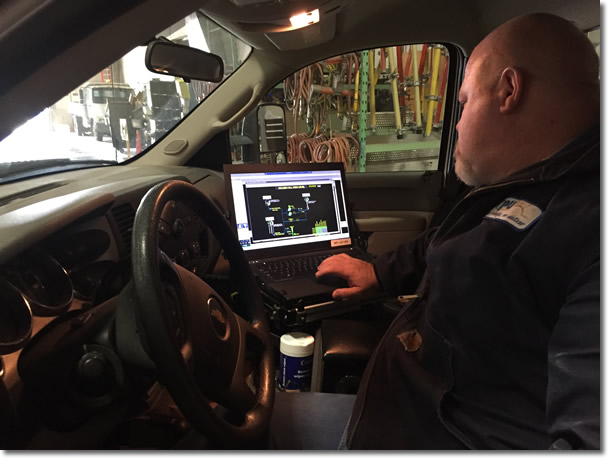Drinking Water Protection
- Drinking Water Protection Home
- About Us
- A-Z Index of Contaminants in Water
- Community Public Water Supply
- Drinking Water Grants and Loans
- Drinking Water Institute
- Drinking Water in Schools and Child Cares
- Drinking Water Revolving Fund
- Laws and Rules
- Noncommunity Public Water Supply
- Source Water Protection
- Water Operator and Certification Training
- Drinking Water Protection Contacts
Related Topics
- Annual Reports
- Drinking Water Risk Communication Toolkit
- Drinking Water Protection External Resources
- Fact Sheets
- Forms
- Invisible Heroes Videos: Minnesota's Drinking Water Providers
- Noncom Notes Newsletter
- Sample Collection Procedures (videos, pictures, written instructions)
- Waterline Newsletter
Related Sites
- 10 States Standards
- Clean Water Fund
- Health Risk Assessment – Guidance Values and Standards for Water
- Minnesota Well Index
- Water and Health
- Wells and Borings
Environmental Health Division
Sustainability Key to Rochester Water
From the Summer 2018 Waterline
Quarterly Newsletter of the Minnesota Department of Health Public Water Supply Unit, Waterline
A complete list of feature stories can be found on the Waterline webpage.

Doug Klamerus and Cary Johnson in front of Well 41
Disasters are opportunities for Rochester, Minnesota.
An August 1883 tornado, which left widespread destruction and 26 dead, led to the city’s first hospital, led by Dr. William Worrall Mayo and his sons. This was the beginning of the Mayo Clinic and the first sign of Rochester’s future as a medical center.
Nature tore through the city again nearly a century later—a flood that killed five and caused $60 million in damage. This disaster led to the “Renaissance of Rochester,” pulling the city out of a decade of stagnation and signaling the beginning of an era of unprecedented construction.
One of the city’s primary agencies, Rochester Public Utilities, has been working for years to make sure it does not have another kind of disaster—too little water. Groundwater planning, asset management, source water protection, and pro-active strategies are at the heart of sustainability efforts to ensure that the utility can continue to supply safe drinking water to a city that is growing, residentially and commercially.
Background and History
Rochester grew up on the south fork of the Zumbro River, which provided power from its falls but also feeder creeks that were prone to flooding.
With safety a primary concern following the 1883 tornado, the city contracted with a private company, Hodgkins, Moffet, and Clark of Waterville, New York, to operate a water system although fire protection, not drinking water, was the primary motivation.
In 1916 the city purchased the water works company and began adding wells and storage facilities. The 1920s saw the addition of a chlorinator to disinfect the water and a major construction project, which included a 128-foot-high tower near St. Mary’s Hospital that holds 200,000 gallons. The tower, no longer in service but still a landmark for Rochester Public Utilities (RPU), provided adequate pressure to the area surrounding St. Mary’s Hospital and was the beginning of the high-level system still in use today.
Profile
Today Rochester has a population of more than 114,000 and expects annual growth of 1.6 percent for the next 10 years, according to Cary Johnson, RPU manager of maintenance and construction—water operations. In addition, the city is in the early stages of Destination Medical Center, a 20-year economic development initiative that includes expansion of the Mayo Clinic. Water design project coordinator Donn Richardson notes downtown redevelopment and more high-density apartments in the city as another reason for the growth.
The utility has 32 wells (and is adding another in 2018) and pumps approximately 4.7 billion gallons of water per year. (RPU pumped 4.49 million gallons in 2016.) The wells range in depth from 400 to 1,000 feet and draw mainly from the Jordan Aquifer, a sedimentary unit that underlies much of southeastern Minnesota. Other multi-formation aquifers—Prairie du Chien-Jordan, Prairie du Chien-Wonewoc, Jordan-Wonewoc, and Prairie duChien-Mt. Simon—supply water for Rochester.
The wells are interconnected, and the water is treated with chlorine, fluoride, and a polyphosphate for corrosion control at each site. Johnson noted the complexity of the distribution system, which has numerous pressure zones. Nineteen storage facilities hold nearly 17 million gallons of water.
Even though the customer base is growing, the per capita usage is going down says Sidney Jackson, RPU director of core services.
Senior civil engineer Doug Klamerus credits residents and businesses for understanding the need to conserve and use water wisely. “The community is seeing the big picture,” Klamerus said. “I see nothing but support for the conservation program.”
Sustainability
Todd Osweiler, environmental and regulatory affairs coordinator, said the announcement about Destination Medical Center, as well as other water concerns in the news, “brought up the question of how much we can keep on pumping.”
RPU has partnered with Barr Engineering of Minneapolis, the U. S. Geological Survey, and the Minnesota Department of Natural Resources on groundwater studies and evaluation. “We became pro-active about sustainability,” said Osweiler. “All this spurred more on sustainability.”
A sustainability evaluation has included input from stakeholders, review of existing data, groundwater modeling to determine the potential impact of future pumping, identification of data gaps that produce uncertainty in modeled predictions, and the development of a monitoring plan.
Osweiler outlined the four components RPU has for conservation and sustainability: leak detection, rate setting, water rebates, and education.
The utility performs a leak detection survey on half the system each year, using resources to find and fix leaks, resulting in water accountability of more than 95 percent.
Rates are set with a multi-tiered structure that rewards low usage. Commercial irrigation is the highest tier grade. “Use more, pay more,” says Klamerus.
RPU encourages residents to replace fixtures with ones that use less water and provides rebates for such purchases. Osweiler says in 2015 that RPU issued nearly 1,600 rebates that have resulted in savings of 8.8 million gallons.
At the heart of the sustainability effort is education. The more people understand all that is involved in producing and maintaining safe water, the more that are willing to do their part in protecting and conserving it.
Tours bring in school children, who are asked for their ideas on protecting water. Rochester has three times hosted the American Water Works Association Drinking Water Institute, a four-day summer program for Minnesota science teachers to learn about water and develop inquiry-based activities to integrate into their existing curriculum.
RPU Plugged In is a monthly publication with information on easy ways to conserve water and how to find leaks in homes as well as updates on what utility projects. RPU promotes drinking tap water instead of paying for bottled water by encouraging schools and business to install filling stations for reusable water bottles. The annual water quality report (Consumer Confidence Report) is included in one of the issues each year, and the utility has put coupons in the publication for residents to get a free water bottle.
It also offers a Service Assured Program for a monthly fee, which covers repairs on portions of the water system that belong to a resident, such as the service line.

One of the 32 wells serving Rochester.
Asset Management and Enhanced Sampling
RPU employs asset management to budget for future projects. A two-year study now underway will plan for the next 30 to 40 years, examining the life expectancy of current infrastructure and identifying critical assets and their impact on customers. Having a plan to rehabilitate or replace pumps, pipes, and storage facilities allow for controlled maintenance rather than crisis situations.
Water main repairs have historically been dictated by when and where street repairs were being made. Klamerus says a more collaborative approach, which includes the needs of RPU to replace or rehabilitate water infrastructure, is now part of the decision-making process for future street repairs. Klamerus said asset management planning is a way to gain a better understanding of the extent of financial investment needed to maintain our current level of customer service. If more investment is needed than current street repair projects allow, RPU will look at the most financially feasible option between full water main replacements or trenchless rehabilitation technology to maintain the utility’s infrastructure for additional projects.
In addition to planning to avoid dealing with emergencies, asset management is a budgeting tool, a way to avoid radical rate increases.
Beyond sampling for contaminants regulated under the federal Safe Drinking Water Act, RPU has been involved in a general chemistry project, testing under the Unregulated Contaminant Monitoring Rule, and special projects such as a pesticide study in conjunction with the Minnesota Department of Health (MDH) and Minnesota Department of Agriculture.
MDH district engineer Paul Halvorson said, “It is some of the most sampled water in the state. All of our data will help them in the future as they use their models to evaluate groundwater sustainability.”
RPU has 6 water operators and 11 people in the field with GPS in all trucks and iPads with all staff. Two of the trucks have a SCADA interface in them. “What helps me in getting samples in an efficient manner is the operator’s ability to operate the system remotely via SCADA in the truck,” says Halvorson. “With this, the operator can have the required wells running for a while before I get there, so it’s a quality, representative sample.”
As is the case with every water system, the quantity and quality of drinking water is paramount. Reliable service is necessary. Rochester Public Utilities serves a city that has been used to challenges from nature, and it is determined to not allow anything to disrupt the water service to Rochester residents.

Rochester Public Utilities Scott Rendler in a SCADA truck.
Go to top